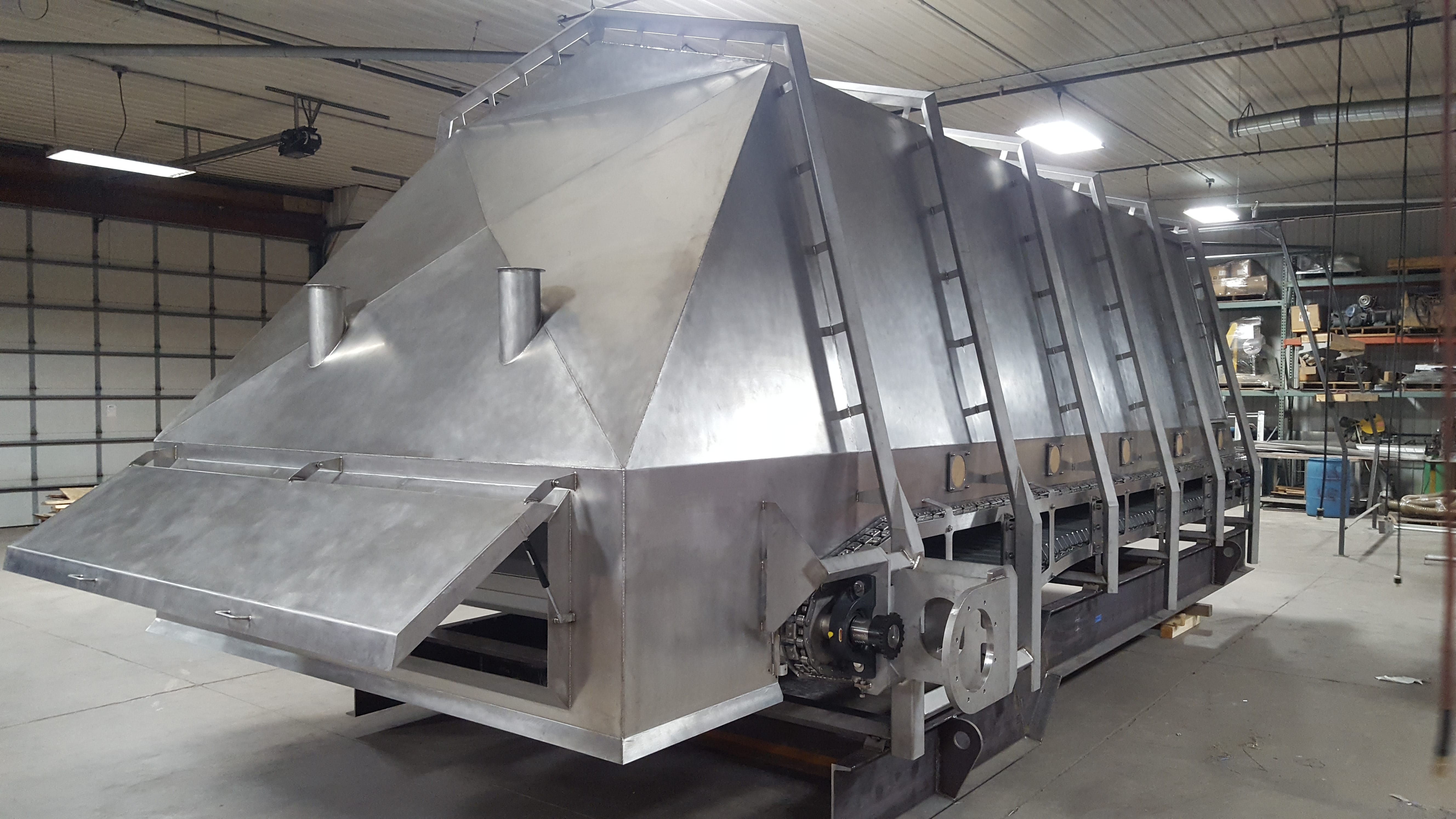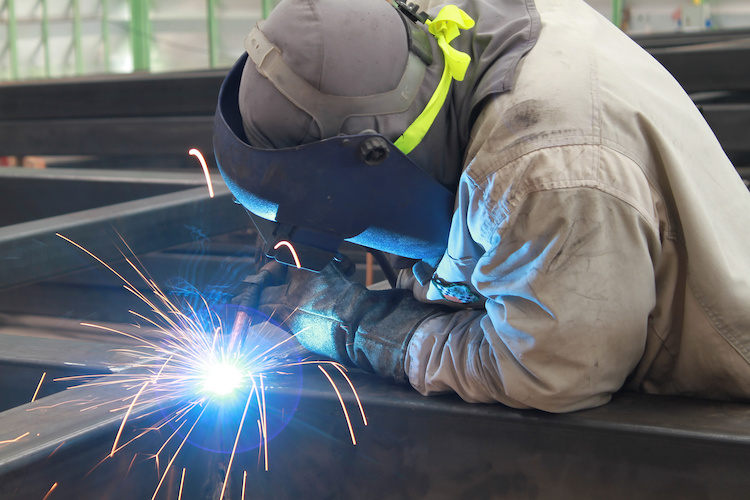Comprehensive Evaluation of Cutting-Edge Techniques in Steel Construction Market
As the steel fabrication industry remains to advance, the integration of sophisticated methods has become vital for remaining affordable and fulfilling the demands of modern-day production requirements. From laser cutting developments to the usage of robotics and 3D printing in steel production, the landscape of manufacture strategies is quickly transforming. With each development bringing its own set of benefits and difficulties, a comprehensive evaluation of these strategies is critical for firms intending to enhance their processes, improve precision, and ultimately, elevate the quality of their steel fabrication outcome. In this vibrant market where modern technology plays a crucial role, recognizing the nuances of these advanced methods is not simply an option yet a need for those aiming to create in advance in the ever-evolving world of steel construction.
Laser Cutting Innovations
In the realm of steel fabrication, laser reducing improvements have actually changed the precision and efficiency of metal shaping processes. By harnessing the power of focused laser beams, makers can now accomplish unrivaled degrees of accuracy when cutting through numerous kinds of metals. This modern technology allows elaborate styles to be performed with very little product wastefulness, making it an economical solution for sectors needing high precision parts.
One of the key advantages of laser cutting is its capability to take care of a large variety of materials, consisting of stainless-steel, light weight aluminum, and carbon steel, with convenience. The process produces clean, burr-free edges, getting rid of the demand for extra finishing actions. The non-contact nature of laser cutting lowers the threat of material contamination, resulting in greater top quality end items.
Additionally, laser cutting equipments can be programmed to make swift, precise cuts, significantly minimizing production time contrasted to typical cutting methods. This speed and accuracy make laser cutting especially ideal for automation environments where effectiveness is critical. As modern technology remains to advance, laser cutting is positioned to play an increasingly important function in the steel fabrication sector.

CNC Machining Innovations
The advancement of CNC machining innovations has actually ushered in a brand-new era of accuracy and efficiency in the steel construction industry. Computer Numerical Control (CNC) makers have actually changed steel construction by using unparalleled precision and repeatability in the manufacturing procedure. steel fabrication melbourne. One of the essential technologies in CNC machining is the assimilation of sophisticated software application systems that make it possible for real-time monitoring and changes, leading to improved performance and top quality control
Additionally, the growth of multi-axis CNC machines has actually permitted the manufacture of complex steel elements with complex designs that were formerly testing to generate. These machines can execute a wide variety of machining procedures, consisting of milling, boring, transforming, and grinding, all with high degrees of precision.
In addition, the incorporation of automation and robotics in CNC machining has streamlined production procedures, reduced preparations, and decreased the margin of error. This combination of innovative modern technologies not only enhances effectiveness but likewise makes certain regular high quality throughout all fabricated steel components. Finally, CNC machining innovations proceed to drive improvements in the steel manufacture industry, establishing brand-new requirements for precision and productivity.
Automated Welding Technologies
Automated welding technologies have reinvented the steel construction industry, enhancing effectiveness and accuracy in the welding procedure. These innovative modern technologies make use of computer-controlled systems to automate the welding procedure, causing greater performance levels and improved weld quality. Among the essential advantages of automated welding is the capability to perform intricate welds with regular precision, reducing the probability of mistakes and revamp.
Robot welding systems go to the forefront of automated welding innovations, supplying unmatched rate and precision. These systems can handle a large range of welding jobs, from simple to elaborate, easily anchor (Alpha reo). By utilizing sophisticated sensing units and software, robotic welders can adapt to variants in product and joint geometry, making certain an attire and reputable weld
In addition, automated welding technologies enhance work environment security by minimizing the direct exposure of human welders to unsafe fumes and intense heat. As the steel construction market remains to progress, integrating automated welding technologies will be important for firms seeking to remain affordable and meet the growing needs for premium bonded products.
Robotics Integration in Construction
Making use of robotic systems in fabrication procedures has actually ended up being an essential method for enhancing efficiency and precision in modern production atmospheres. Robotics assimilation in steel manufacture uses a myriad of benefits, consisting of increased productivity, boosted quality assurance, and boosted security actions. These advanced robotic systems are equipped with sophisticated sensors and shows capabilities, allowing them to perform detailed jobs with a high level of accuracy and repeatability.
Among the crucial benefits of robotics integration in steel fabrication is the capability to automate recurring jobs, such as product handling, reducing, welding, and assembly processes. This not just speeds up production cycles yet also lowers the risk of human mistake, leading to greater overall item quality. In addition, robots can operate 24/7, considerably enhancing production outcome and conference limited project target dates.

3D Printing in Steel Manufacturing
Having reinvented the steel manufacture industry with robotics combination, the burgeoning exploration of 3D printing in steel production is poised to further advancement see this site the realm of modern production methods. 3D printing, likewise called additive production, provides extraordinary layout freedom and intricacy, allowing the production of detailed steel frameworks that were formerly unattainable through typical manufacturing methods. By utilizing computer-aided style (CAD) software program, producers can precisely manage the layer-by-layer deposition of steel product, causing get rid of improved geometries and capabilities.
One of the key benefits of 3D printing in steel production is its capability to minimize product waste substantially. Unlike subtractive manufacturing processes where excess product is cut away, 3D printing only utilizes the needed quantity of steel needed for the last part. This performance not only results in cost savings however additionally straightens with lasting manufacturing techniques by minimizing ecological impact.
Moreover, 3D printing makes it possible for fast prototyping and modification, permitting the manufacturing of tiny batches of intricate steel elements with brief preparations. As the modern technology proceeds to mature and come to be extra accessible, its integration right into mainstream steel fabrication processes is expected to drive innovation and effectiveness throughout the market.
Final Thought
In final thought, the steel construction sector has actually seen substantial developments in methods such as laser cutting, CNC machining, automated welding, robotics integration, and 3D printing. These sophisticated technologies have actually changed the way steel items are produced, causing raised cost-effectiveness, accuracy, and performance. Continued financial investment in these cutting-edge strategies is crucial for the sector to remain competitive and fulfill the demands of modern-day manufacturing procedures.
As the steel manufacture industry continues to evolve, the integration of sophisticated techniques has actually ended up being essential for remaining competitive and meeting the demands of contemporary production requirements.One of the essential advantages of Get More Information laser cutting is its capacity to handle a wide range of materials, consisting of stainless steel, aluminum, and carbon steel, with simplicity.Automated welding innovations have changed the steel fabrication market, improving effectiveness and precision in the welding procedure.Having transformed the steel fabrication market via robotics integration, the growing exploration of 3D printing in steel production is poised to further development the world of contemporary production strategies.In conclusion, the steel manufacture sector has actually seen considerable innovations in strategies such as laser cutting, CNC machining, automated welding, robotics integration, and 3D printing.